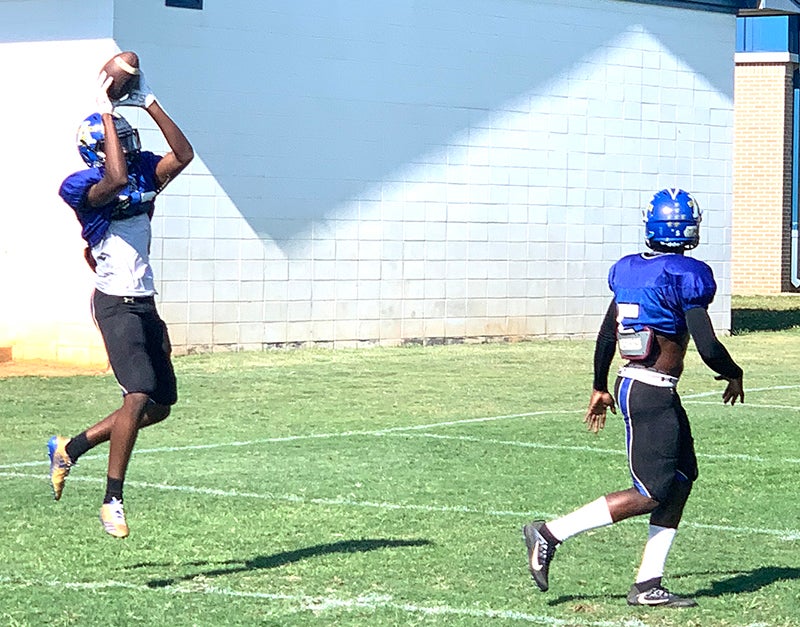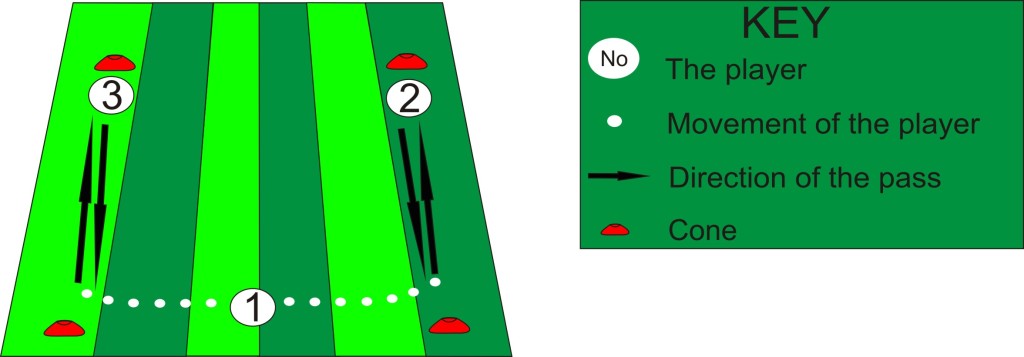

#Tip drill football full#
“That means you will leave the line with a full breath, before taking your second breath around the 10-yard mark and taking only 3-5 more deliberate breaths over the entire 40-yard distance.” He says, and explains this takes practice so don’t stress it on day one – you’ll get it.įirst is the start. Johnston’s rule of thumb for breathing is taking one lungful of air every 4-6 strides. Jesus Cervantes Reach 40-Yards Fast with Johnston’s Pro-Tipsįirst, Breathe: Proper breathing techniques can either make or break your sprinting experience. Ultimately becoming a more powerful and “explosive” athlete demands the use of sprinting alongside your program to increase that force production threshold. Those exercises require far less nervous system activity and only cause fatigue after a sustained, lower level of effort and strength output. Contrast that with a bodyweight squat or a bout of 30-minutes on the stair climber. To simplify: Think of sprinting in terms of weight training A sprint is akin to a max effort squat which will test your ability to produce the most force physically possible for a brief period. “There is a strong distinction between sprinting, running or jogging, and that distinction lies in the acceleration phase and the ultimate energy output required to reach top speed for the individual,” he says. “Sprinting, along with various plyometric movements, horizontal and vertical leaping, may very well be the most dynamic test of a person’s ability to produce power with their lower body muscles,” says Johnston.Īnd while this may be true, Johnston explains the ability to sprint is a skill that must be practiced and does not come naturally to a large segment of the population. GlebSStock / Shutterstock Sprinting: Every Athlete’s Tool to Becoming Powerful and Explosive

Hint: You don’t have to be in the NFL to successfully run the 40-yard dash! Here, Johnston simplifies and focuses on the four primary stages of the 40-yard dash: Start, acceleration, transition, and sustain (or finish). “My sprinting times were made possible through both my natural God-given foot speed along with the methods I will be diving into here.” He says. “The reason for this is due to the short distance involved in the sprint even a minor mistake can cost you 0.1 (one tenth) of a second which may spell the difference between a first or a third-round pick.” He explains.Ī natural sprinter his whole life, Johnston, while in High School, worked with and was mentored by a well-respected combine prep and Olympic coach, Rich Lansky, who developed many techniques which Johnston uses to this day with his own clients. “It may not seem immediately evident, but the 40-yard dash is one of the most technical foot races in all of sports, including the Olympic short sprints,” says Bryce Johnston, PCA classic bodybuilding pro, and sprinting expert who recorded a 6.44-second 60-yard dash in baseball, and a 4.42-second 40-yard dash at 220 pounds while playing football at Georgia Southern College.

It is a true measure of how quickly an athlete can explode off of the line and reach top speed. Recognized as one of the most well-known sprints (and test of speed and acceleration), in the world is the 40-yard dash.


 0 kommentar(er)
0 kommentar(er)
